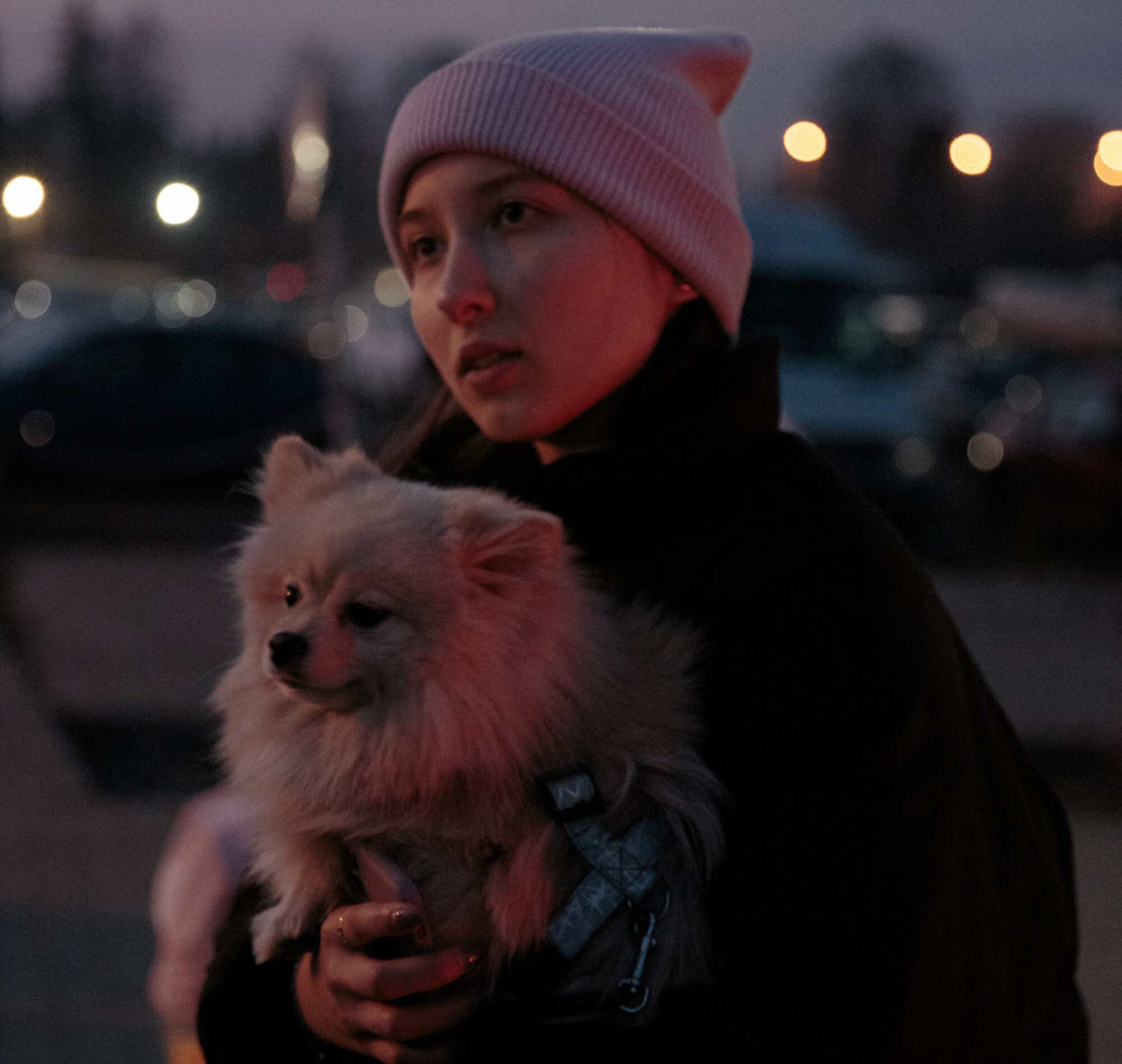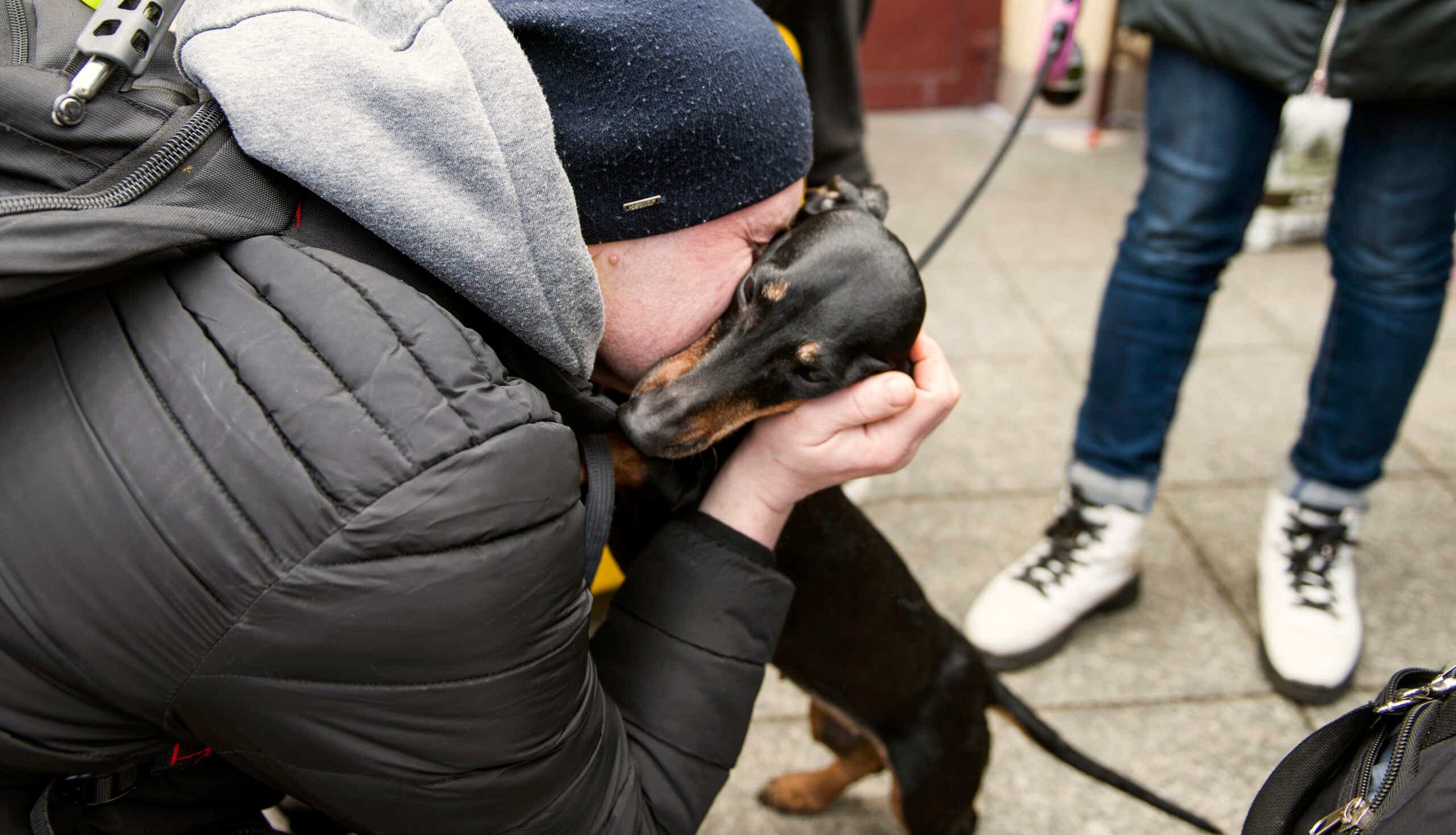News sites and social media feeds are saturated with images coming out of Ukraine. From people crowded into subway stations to hide from Russian shelling, to train platforms packed with people hoping to reach the border, the portrait of human suffering is overwhelming. Yet even amidst the inconceivable tragedy of what's happening in the country, one dimension of the Ukrainian experience is increasingly capturing people's attention.
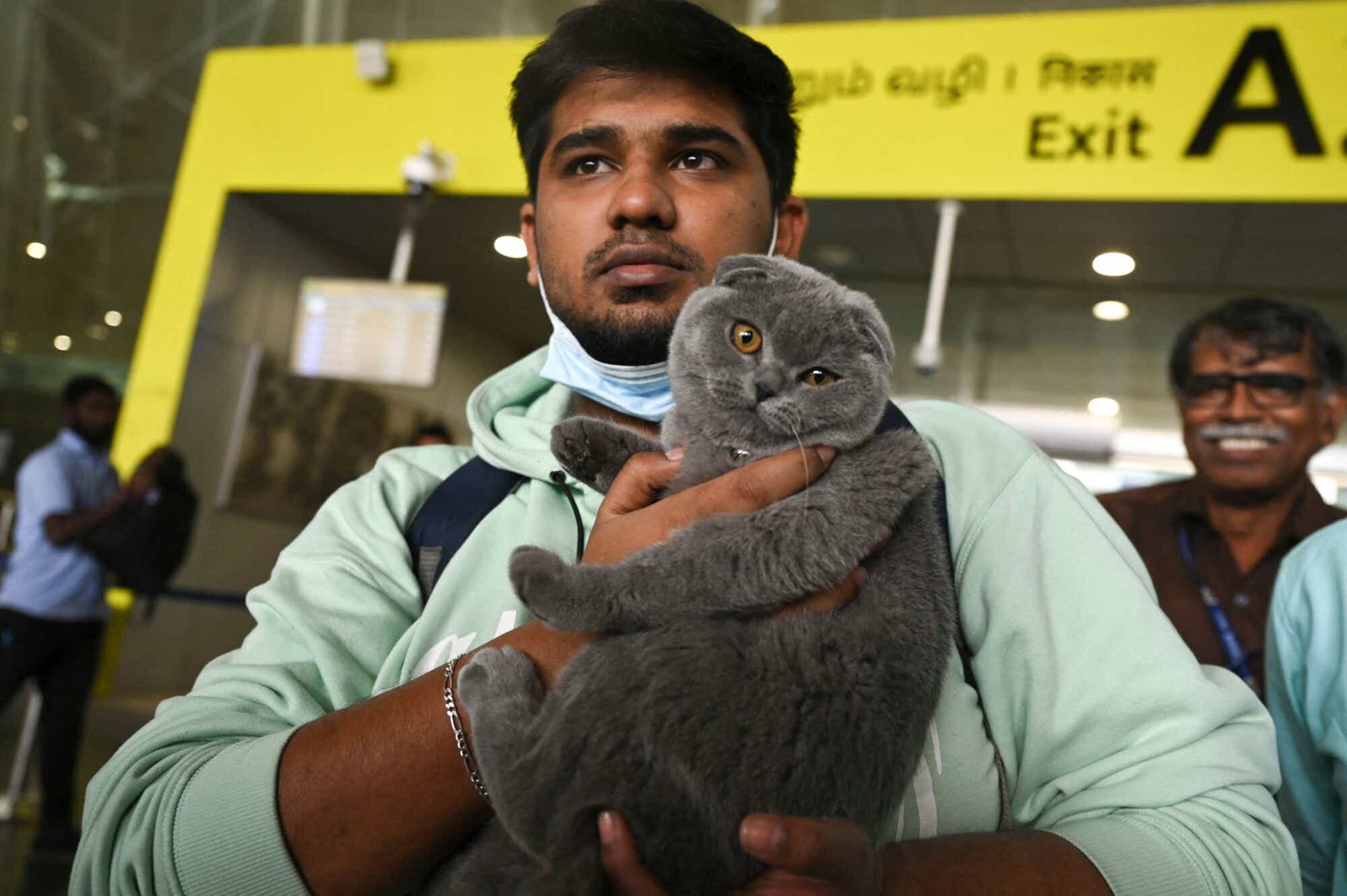
Just over a week after Russia invaded, more than a million people have fled Ukraine. And one of the many striking elements of the images capturing this exodus is the number of pets that appear to be accompanying them.
Adults and children carrying small dogs and cats, or accompanied by larger dogs walking or sitting by their side, feature in almost every photo. And no wonder.
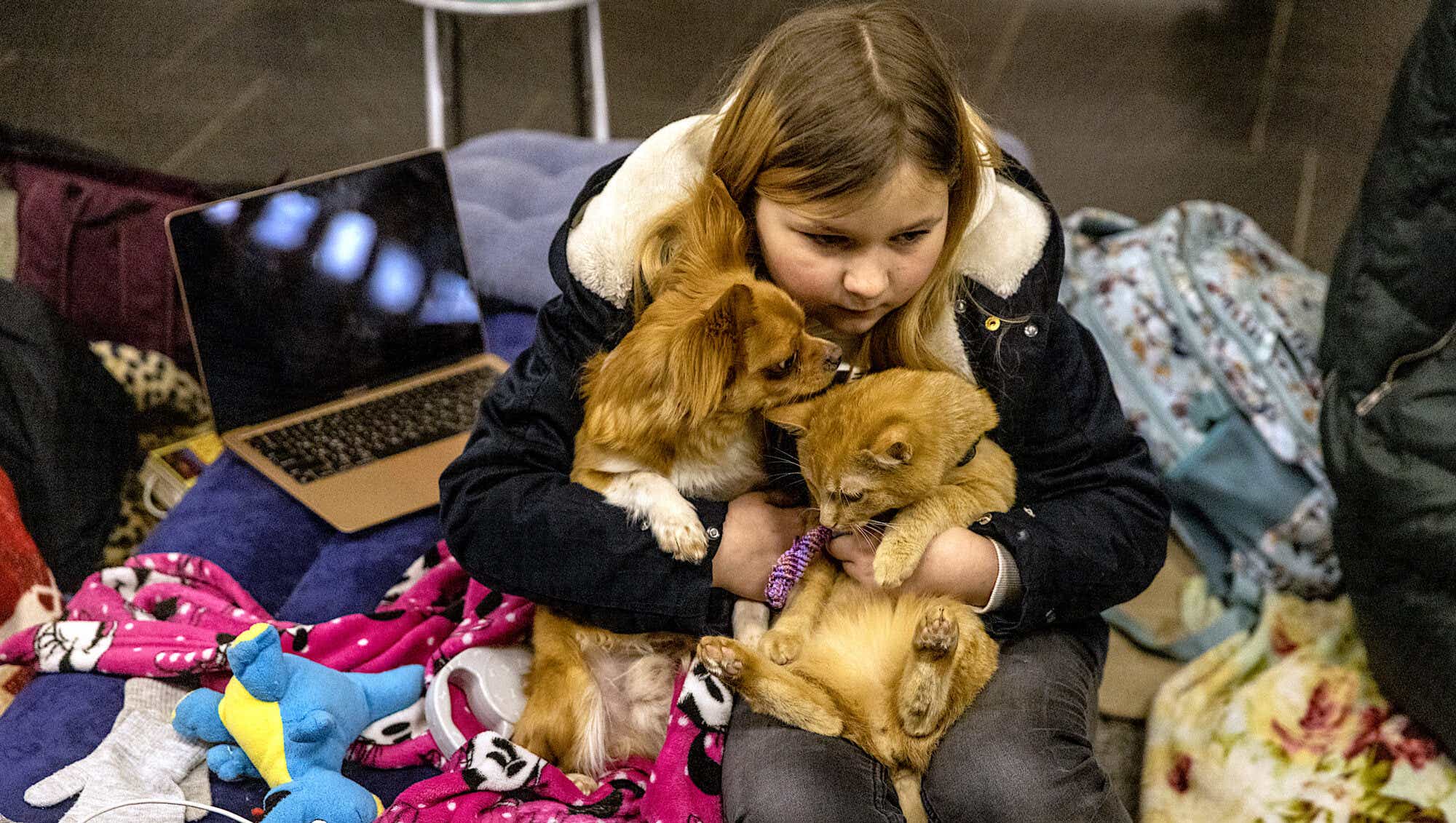
Constant Russian shelling puts Ukraine's animals in danger
"The devastation caused by some of these rocket attacks, that open environment full of glass, concrete and metal is dangerous to people but also to animals," James Sawyer, UK director of the International Fund for Animal Welfare (IFAW) told BBC Radio 1 Newsbeat.
"Local supplies are running out, one of the two animal shelters we support has been damaged by shells, losing one of the animals," he adds.
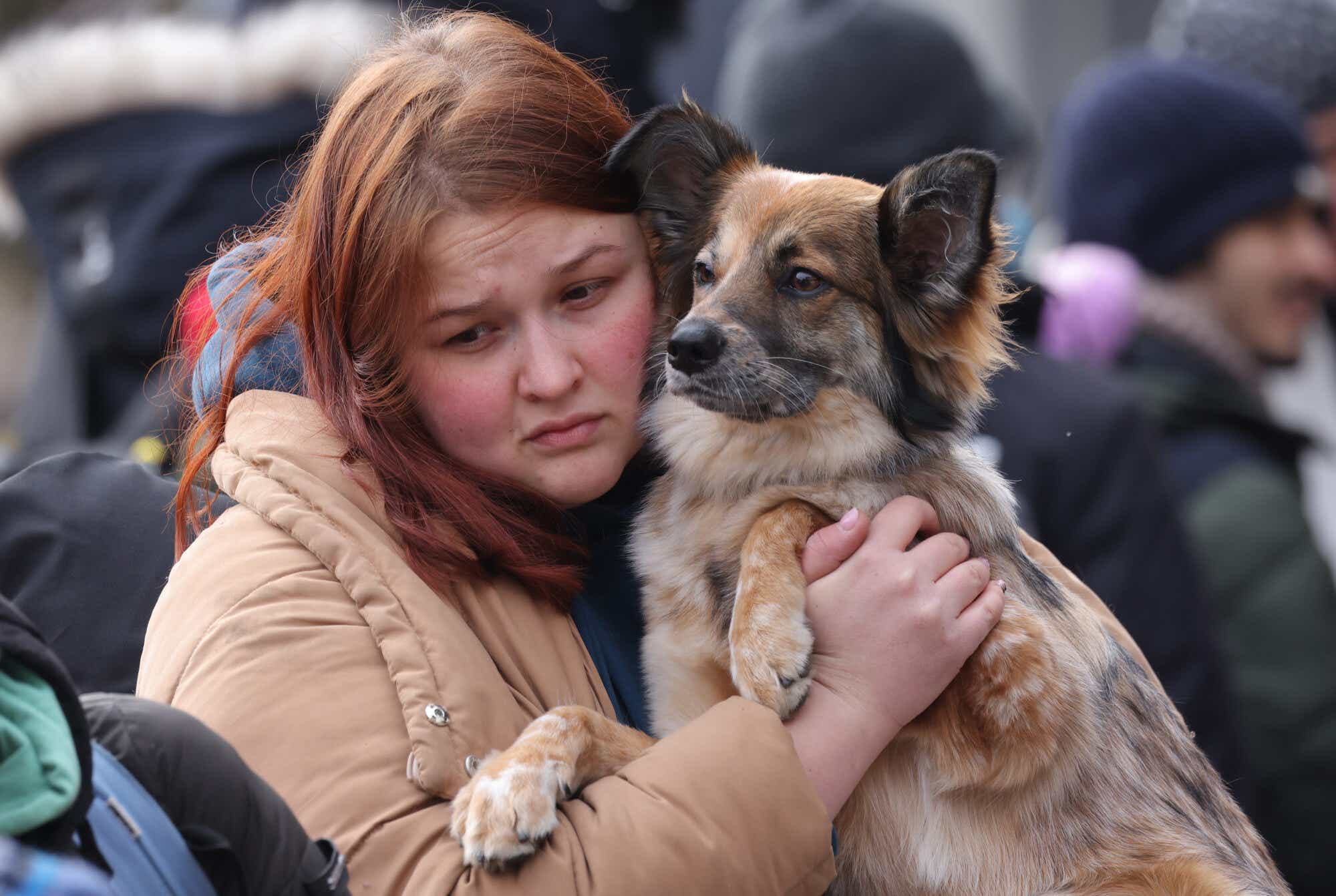
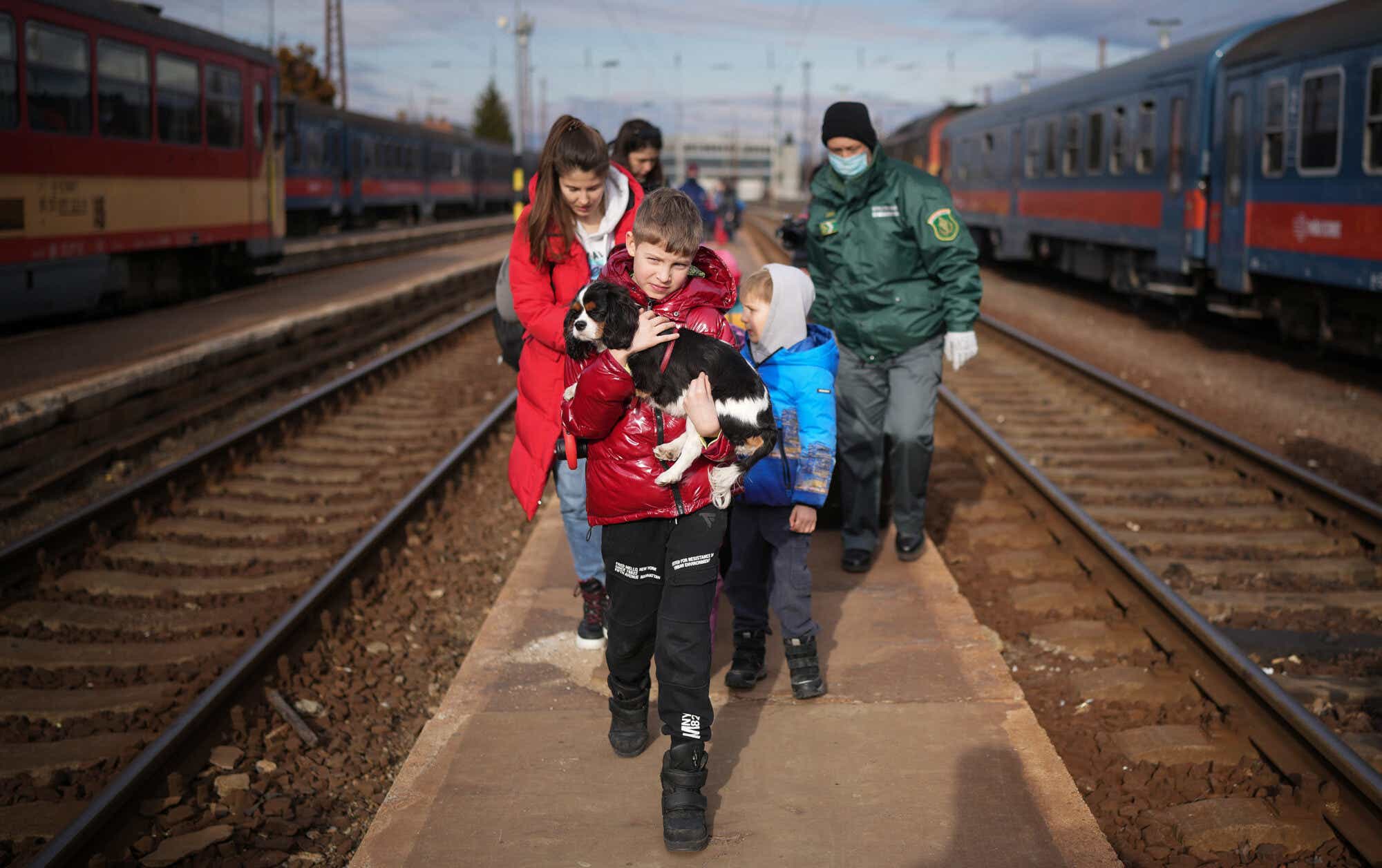
Some Ukrainians are staying behind to look after animals in shelters
Unable to safely put people on the ground, organizations like the IFAW are providing emergency aid remotely. Meanwhile, some Ukrainians feel such a responsibility towards the animals in their care that they're staying put even as the Russian assault grows more intense.
Journalist Erin Burnett, who's been following the invasion on the ground, tweeted a story of the owners of a cat cafe in Lviv who are remaining in the city as they refuse to abandon the 20 cats that they foster.
One man wearing a battle helmet was pictured carrying a fish tank and cat cage out of an apartment reportedly damaged by shelling.
The Albanian Times meanwhile shared a story of a tiny puppy spotted by Ukrainian soldiers, who has now joined their ranks. Little Rambo, as they've called him, is now standing guard in their post.
Animals on the move are getting help on Ukraine's borders
As for animals on the move, PETA Germany has been on the border trying to shepherd them out safely. The organization tweeted that staff are "providing animal food, blankets, and support for people and their animal companions at the Ukrainian border."
Jennifer White, a representative from PETA, told the BBC that two tonnes of cat and dog food have been donated with the help of partner groups in neighboring countries like Romania. Blankets are also being offered to people who've been walking vast distances.
Ukraine's neighbors relax their rules on pets
Per euronews, Romania, the Czech Republic, Lithuania, Slovenia, Hungary, and Poland have loosened their rules on pets, meaning refugees traveling out of Ukraine can bring their animals. Poland has even offered funds for pets' vaccinations and accommodation.
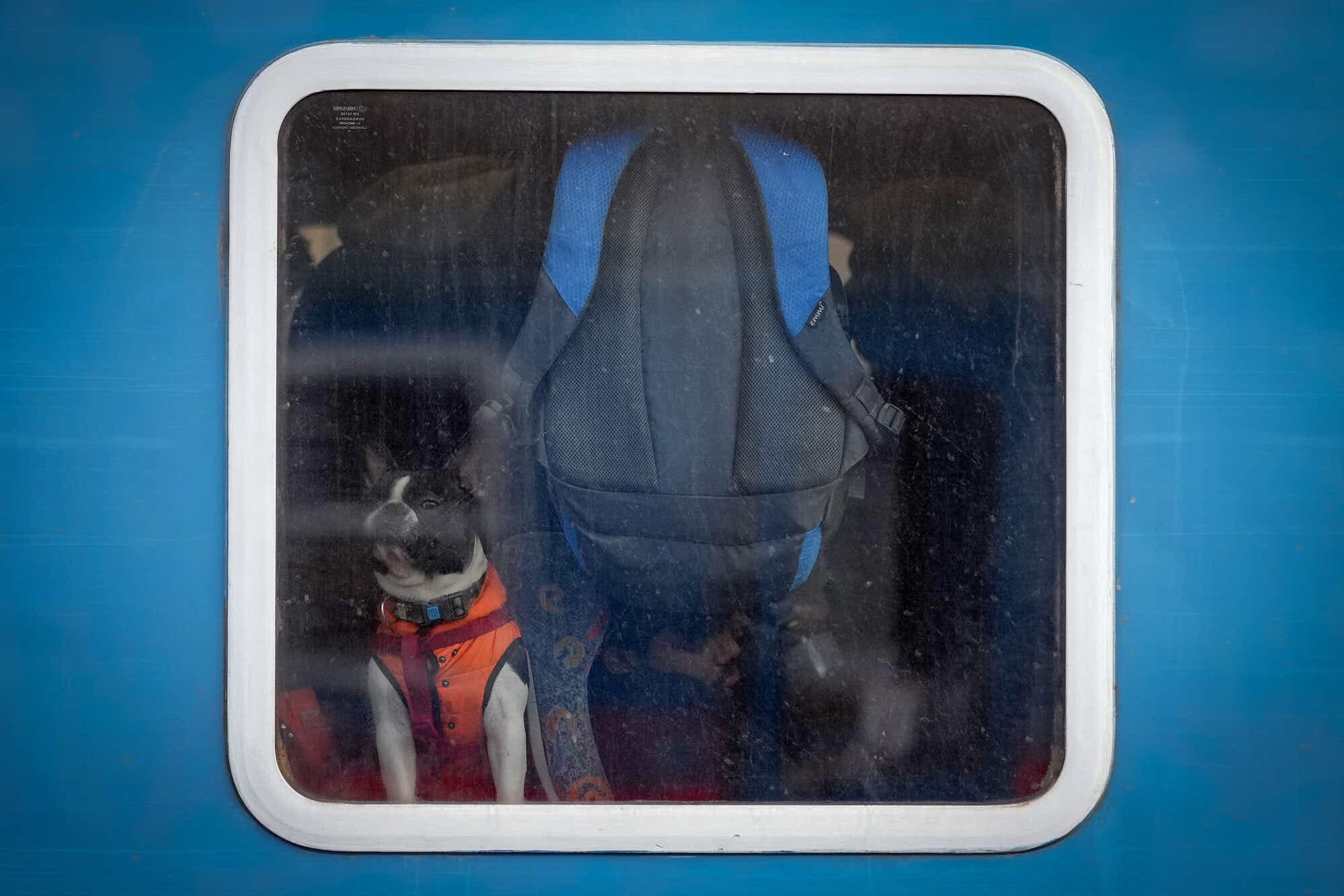
According to euronews, Safe Haven, a family-run animal shelter based in Galti, Romania, is providing help at three customs points: Giugiulesti and Oancea on the Moldova-Romania border, and Isacea on the Ukrainian border.
Help for pets of men forced to stay in Ukraine
Because Ukrainian men aged 18-30 aren't allowed to leave the country under martial law, Safe Haven is also offering foster homes to some of their pets.

A note of caution for animal lovers watching this unfold
There's something uniquely relatable and affecting about people clutching their beloved pets, even in the most extreme and unimaginable situations. But it's important to keep the broader implications top of mind.
Reports last year that U.K. Prime Minister Boris Johnson personally approved rescue dog evacuations out of Afghanistan over Afghan citizens who had worked for the British in the country provoked a huge — and warranted — backlash. People rightly pointed out the injustice of leaving people to die "like animals," while shuttling pets to safety.
If the photos of people carrying animals to safety help you to connect with what's happening in Ukraine in a more "real" sense, that's a good thing. But it's crucial to keep our priorities straight when considering the awful impact of war.
